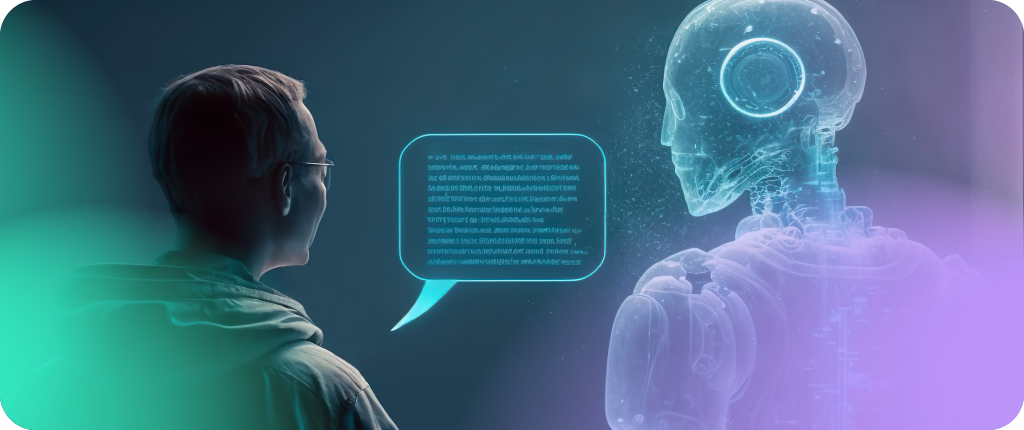
Can you believe that it has only been around 15 months since ChatGPT first launched? In that short time, the OpenAI application and a wide range of other innovative artificial intelligence tools have completely revolutionised all kinds of industries.
Copywriting is no different, with pieces that may have previously taken hours to complete now being achievable in a fraction of the time thanks to AI. But for all their benefits, ChatGPT and the other AI writing tools out there also come with some significant drawbacks – the primary of these being that they can make your writing sound robotic, repetitive and downright cringeworthy if you aren’t careful!
We’ve put together a handy ‘cheat sheet’ that you can use to inject a bit of much-needed humanity back into your AI-enhanced writing – take a look below.
Look out for ‘red flag’ words and phrases
Anyone who has used ChatGPT a few times will have noticed its penchant for using the same few words and phrases ad infinitum. It’s important to spot these and replace them with more natural sounding language if you don’t want your work to scream “this is AI-written!”
A good rule of thumb to use is, if you wouldn’t use a certain word or phrase in your natural writing, then replace it. Here are a few common ‘red flag’ AI words and phrases:
- “Leverage”
- “Utilise”
- “Burgeoning”
- “Dynamic”
- “Delve”
- “Robust”
- “Fostering”
- “In today’s fast-paced business world”
- Starting a sentence with “Additionally”
- Describing something as “a rich tapestry”
- Describing something as “a testament to” something else
- Describing something as “not only [X], but also [Y]”
- Any American English spellings (if you’re writing in British English)
Conversely, if you’re in an industry that uses any of these phrases commonly, or if you’ve found a way of using them that sounds natural, then don’t exclude them purely on the basis that they’re favoured by ChatGPT – just make sure to get the balance right.
A good prompt makes all the difference
ChatGPT is trained on a massive bank of human-produced data, and just like a human, it performs better when given clear, detailed instructions, so it’s crucial to reflect this in your prompts. Imagine yourself being given the same instructions – what information would you need to create the best work possible? Here’s an example of how not to write a prompt:
“Write a blog about B2B digital marketing agencies.”
Now let’s add some more specific instructions about the copy we want to receive:
“Write a blog about B2B digital marketing agencies. The blog should be approximately 400 words long, focusing on the many advantages of B2B digital marketing and the benefits that it can provide to businesses various industries. Begin the blog with a brief introduction before splitting it up into several different subheadings discussing the various benefits and finishing with a conclusion. The blog should be written in a personable tone of voice. Also include an accompanying social media post to introduce the blog.”
If you’re still looking for something different, you can really get creative with your prompts. This prompt may sound silly, but ideas like this can actually ‘trick’ ChatGPT into producing more creative results! Try out some of these quirky ideas in your prompts:
“Write a blog about B2B digital marketing agencies. You are the smartest person in the world and an expert on this topic. The time is 10am on a Tuesday, and you’re feeling motivated. If you do a great job, I will tip you £100.”
Finally, if you receive copy that you’re happy with, remember that you can simply ask ChatGPT to provide the prompt it would give to itself in order to create a similar piece of content. This can be a great way to learn how to write more useful prompts in future.
Don’t be afraid to go back and forth
ChatGPT rarely gets it right first time, so if you’re only using the results from one prompt, you’re doing it wrong. Unlike humans, AI is more than happy to go through interminable rounds of amends without ever getting tired or bored, so use this to your advantage.
If a section of copy isn’t quite right, ask for an updated version. You can also ask for the same copy to be provided in a range of structures and tones of voice, taking the best parts from each version. You can even ask ChatGPT to provide planning notes for an article and write the rest yourself or provide it with your own notes and ask it to write them up.
AI large language models are more than just copywriters, they’re also editors, planners, reviewers, and assistants! Make sure you’re making the most of their full range of capabilities.
Look out for hallucinations
If ChatGPT doesn’t know something, it has the unfortunate tendency to make up an answer out of thin air – and it can sound very confident while doing so! In the AI world this phantom incorrect information is referred to as a ‘hallucination’. Developers are currently working hard to cut these down, but they do still occur from time to time.
If you receive content that doesn’t sound quite right, make sure to check it against other sources and your own expertise, especially if it’s a topic the AI is likely to be less confident about, such as anything post-2021 (ChatGPT’s training data currently only contains text dating up to January 2022).
In short
ChatGPT and the other proliferation of AI tools out there is the most exciting tech development of the last few years, and by using it to its full potential, you can take your writing up a gear and avoid any of its common pitfalls.
Beware of any red flags, don’t shy away from injecting creativity into your prompts, and be on the lookout for hallucinations, and creating great AI enhanced copy without sacrificing the authenticity and quality of your content will be a breeze.
Is your copy, SEO and website where it needs to be? Embrace Marketing is a specialist outsourced marketing agency. We’re a unique hybrid, as our team combines both in-house and agency skills and expertise. Email hello@weareembrace.com for an initial chat.
This latest thinking article was written by:

Jack Lenton
Content Manager